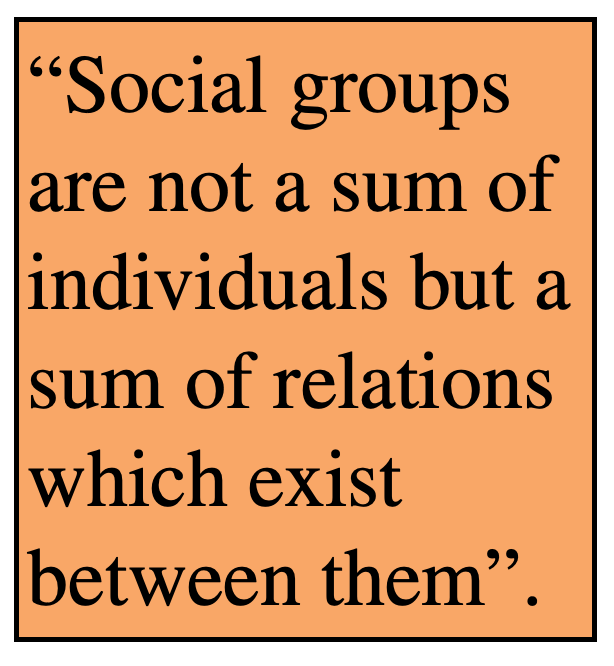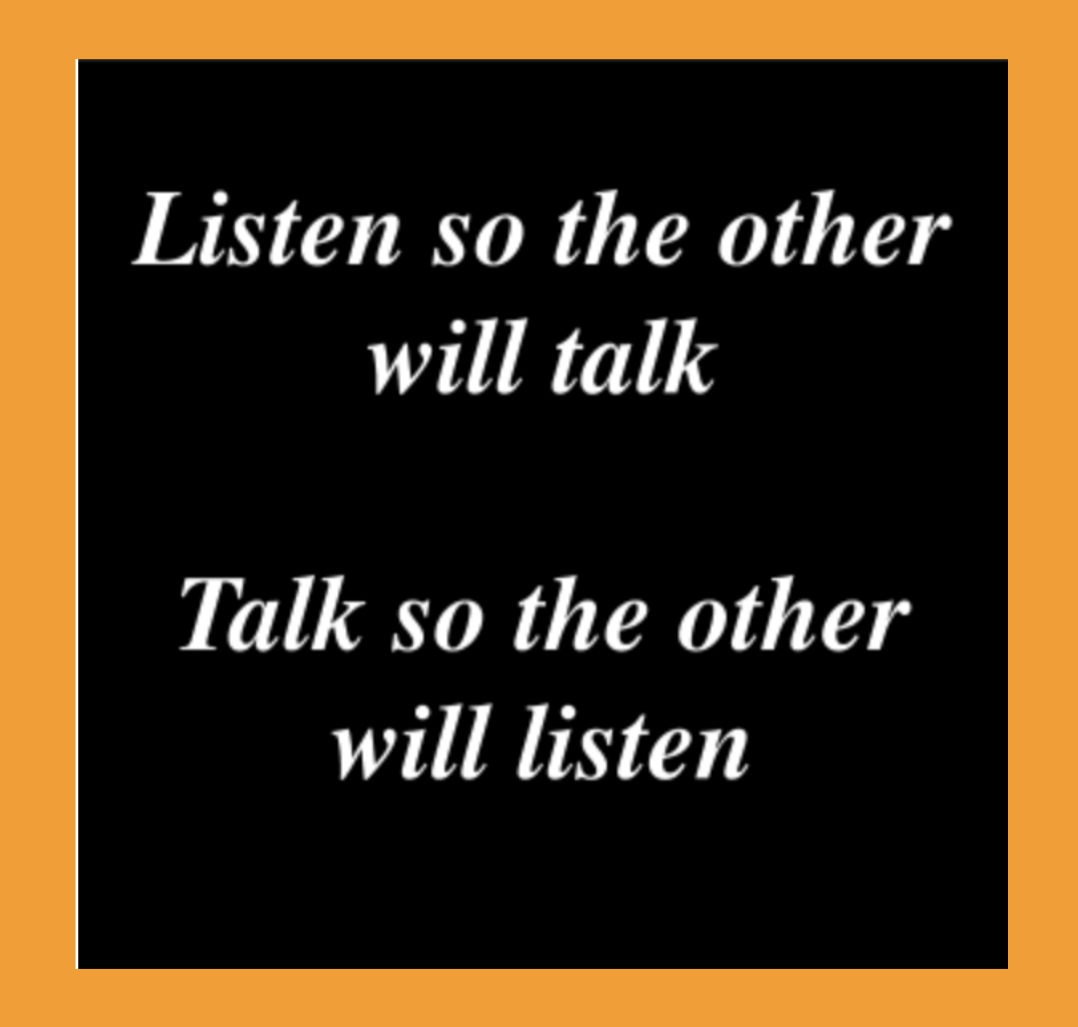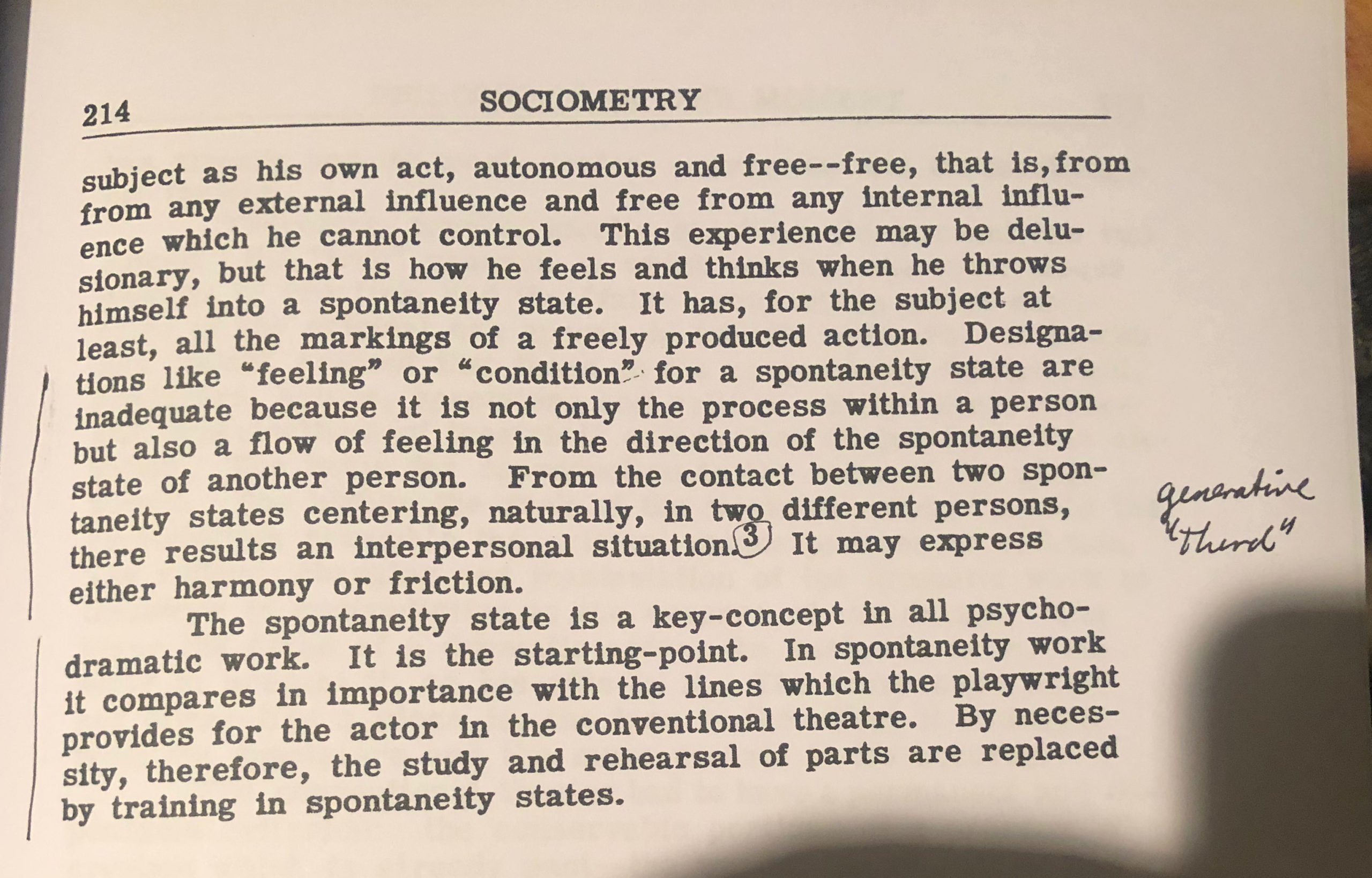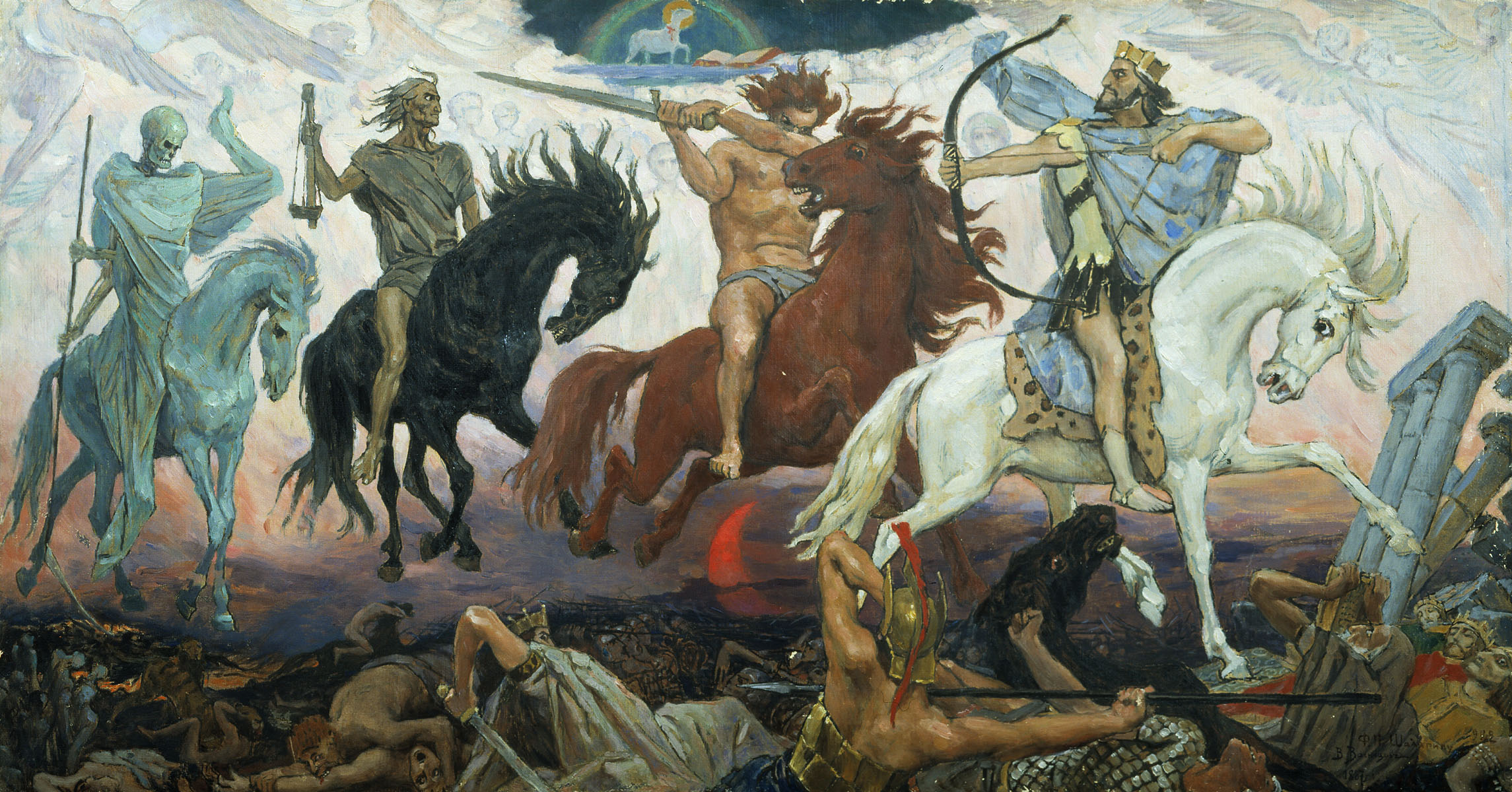Interpersonal situation
Interpsyche – Moreno quote
Marriage and family therapy for instance, has to be so conducted that the “interpsyche” of the entire group is re-enacted so that all their tele-relations, their co-conscious and co-unconscious states are brought to life. Co-conscious and co-unconscious states are by definition such states which the partners have experienced and produced jointly and which can therefore be only jointly reproduced or re-enacted. A co-conscious or a co-unconscious state can not be the property of one individual only. It is always a common property and cannot be reproduced but by a combined effort. If a re-enactment of such co-conscious or co-unconscious state is desired or necessary, that re-enactment has to take place with the help of all partners involved in the episode. The logical method of such re-enactment a deux is psychodrama. However great a genius of perception one partner of the ensemble might have, he or she can not produce that episode alone because they have in common their co-conscious and co-unconscious states which are the matrix from which they drew their inspiration and knowledge.
(Moreno, 1977: vii)
Moreno, J. L. (1977). Psychodrama (Volume One, Fourth ed.) Beacon, New York.
Serendipity and the Sociometric Matrix
Just read a post on John Frame’s blog on Serendipity.
… a strange force called synchronicity, or the coming together of things at one moment in time by that non-linear force called synchronicity. I argued how synchronicity might be related to the two greatest films in Hollywood and one of the most famous books in American history.
Lovely stories about great movies follow.
It made me thing about how drama work… how in psychodrama we use synchronicity – we don’t call it that, but we refer to making the sociometric matrix visible.
Synchronously I was just uploading my 1999 thesis to this blog. I read it through the other day and I was quite pleased with it. I am working with trainees who are writing psychodrama thesis. And it seems to do what I teach now.
Have a clear topic and audience. The central “thesis” needs to be present throughout.
Imagine the task of the group leader when faced with diverse individuals and how this might conflict with the desire to have coherent group life.
Join me as a systems thinker, becoming aware of the inter-relationships in the group, to be able to use the imagination to see the life of the group and the life of individuals.
In art, poetry and psychodrama things come together…
Encounter The Heart of Psychodramatic Couple Therapy — AANZPA Journal 2019 — Walter Logeman
https://aanzpa.org/wp-content/uploads/AANZPA-Journal-28-2019-Art3-Logeman.pdf
Action & Psychodrama
I’m working on a handout on action for a Psychodramatic Couple Therapy Training event in September. Psychodrama is sometimes mistakenly called an “action method”. That might mean people move about. That they exhibit behaviour. The real question is: are they actors? That is, agents in their own life!
The action includes: the body, emotions, thinking, the breath, the spirit, the soul, the chi, life energy, prana. In psychodrama language that is spontaneity-creativity.
Here are two quotes:
The organism-in-environment is a behavioral system; the actor in situ is an actorial system, and, Moreno (1953b) states, it is important to distinguish between the two. A collectivity of actors is a different entity from a collectivity of organisms and has a different meaning.
Warner (1954) points out that from Moreno’s perspective, when one tries to understand behavior by separating an action into components, as the psychologist does, one ends up ignoring the most important characteristics of human behavior, social interaction. Acts, actions, and interactions are complex behaviors that are intended to gain a desired goal. They occur within a cultural context. There is a reciprocal relationship between the members of a group and the group’s culture. On the one hand, it is the actions of the members that create the culture of the group and on the other hand the culture of the group shapes the actions of its members.
Meyer writes, “The heart of Dr. Moreno’s sociometric method is action. Time and again in the writings of this book and elsewhere, he insists that sociometric methods require that individuals cease to be subjects for research, patients in the clinic, or objects of reform. They must become participants” (1952, p. 360). Sociometric research, Moreno insisted, is for the benefit of the people involved, not for the benefit of the researcher. Therefore, the subjects should be included in the design of the research, in the selection of criteria, for example. Sociometry should take place in life, in the real situation of the individuals, not in the
laboratory of the scientist. Unless the sociometric experiment includes an activity in which the group members partake, it is, at best, “near sociometric.” Sociometry is an action method.
John Nolte
It is worth meditating on the words of Moreno — especially how they might apply to couples.
An action matrix registers acts and events . A behavior matrix registers “observations” of acts and events . The actor must become an observer of himself and an actor towards the observer, i.e ., the observer must become an actor towards the observed and an observer of himself ; one must co-act with the other, a meeting is taking place . In an ongoing socio-psychodrama the subjective view of the actor and the objective view of the co-actor are one, they are on the same plane . Indeed, as … auxiliary egos to each other on the plane of action the degree of their reciprocal subjectivities and objectivities are continuously in a process of mixture; A acts towards B, B acts towards A; A observes self and acts towards B, B observes self and acts towards A ; A observes A, B observes B ; A observes A and B, B observes B and A ; A acts towards C, A acts towards B and C, C acts towards B and A, etc . A genuine theory of action and actors deals with actorial categories and interaction potentials like spontaneity, creativity, the warm up, the moment, the meeting, … auxiliary ego and other categories which express the coexperiential level of an actor’s world on the level of action .
Moreno “Who Shall Survive?” p74
Some notes about Action & couple therapy
How does work when we are working with the relationship? The “third entity”?
Not “male female” but role systems — unity of opposites unity and opposites.
The protagonist will transform the and the auxiliary will transform
Action is to do with being actors — active participants.
If there is ambivalence about the relationship — Discernment therapy.
Individuation is always needed
Slavoj Žižek, Quantum and Dialectics
“The idea that knowing changes reality is what quantum physics shares with both psychoanalysis (for which interpretation has effects in the real) and historical materialism”.
Slavoj Žižek – quoted on Redit
That is a great little paragraph!
*

width=”364″ height=”572″
From
Medium article by Paul Austin Murphy
A useful read!!
*
I wish they had an inkling of Moreno in these discussions — psychodrama fits in more tightly than “psychoanalysis.”
*
Interesting the extent to which Bohm was influenced by dialectical materialism:
“In this way Bohm understood it as idealistic. In Bohm’s interpretation, however, the particle possesses at all times a well-defined position and momentum regardless of observation or associating ideas. So, in Bohm’s view, matter came before mind in his theory. Thus he called his interpretation a materialistic one.4 With this materialist interpretation, Bohm wanted to expel mysticism from physics.”
Christian Forstner
Dialectical Materialism and the Construction of a New Quantum Theory: David Joseph Bohm, 1917–1992
✔ July 2021
Discernment Counseling with Rachel Zamore

Sometimes couples aren’t sure whether they are ready to work on their relationship or not. When this happens it isn’t appropriate to do traditional couples therapy until both partners buy in to the process of therapy. Rachel Zamore gives us a closer look at how to work with these mixed agenda couples using Discernment Counseling.
Discernment counselling is a crucial perspective on couple therapy. If a couple or one partner is ambivalent – it is so important not to leap into working on the relationship.
In my work each partner gets a summer of the individual session I had with the other. Those summaries are reframed without blame and they facilitate a process of clarity.
Will they:
Agree to couple therapy for 6 months?
Separare?
Continue with the status quo?
“Between” should not vanish into a “within”.
Talking about Moreno’s approach, German sociologist Leopold Von Wiese, (1949) said:
“the realm of subjectivity is never given up by him. But the use of the word subjective here should not imply that Moreno is limited in his studies by a personal involvement; it is just the opposite. His aim is directed towards the most exact objectification of observations; but the object of these operations is the realm of the human psyche exclusively. This is so perhaps because he is a psychiatrist, a practical psychologist and physician. We too, in our “system of relations” do not neglect the psychological processes; but their penetration is one of several tasks so that we can recognize that realm of existence which. is crucial; the social one which lies between men and not within them. Particularly when one, as Moreno, like ourselves, emphasizes the significance of the little word “between” one should not permit it to vanish into a “within”.”
I like this as a formulation of the relational paradigm.
More on this theme from Von Wiese:
“When we try to reproduce here the chief content of Moreno’s work, we may best start With a statement from White’s foreword to it, one Which is also an axiom of our system of relations: “Social groups are not a sum of individuals but a sum of relations which exist between them”.
Which makes them complex beyond imagination.
Von Wiese, Leopold. (1949). “Sociometry.” Sociometry, Vol. 12, No. 1/3 (Feb. — Aug, 1949), pp. 202—214 Published by: American Sociological Association https://www.jstor.org/stable/2785387




